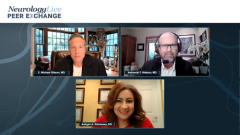
Treatment Selection for Sleep Disorders
Dr Ashgan A. Elshinawy and C. Michael Gibson considers safety and efficacy factors when approaching treatment selection for sleep disorders and insomnia.
Episodes in this series

C. Michael Gibson, MD: We’re back to talking about sleep disorders, and we’re going to focus on treatment options. As cardiologists, we do a lot of safety and effectiveness trials in new cardiology drugs. But when you’re doing a trial of a sleep disorder drug or an insomnia drug, what are some of the safety signals? What are some of the effectiveness end points you look at in your trials?
Ashgan A. Elshinawy, DO: I look at a few things. The first thing I want to see, in terms of efficacy or effectiveness of the drug, is if it’s going to reduce what’s called the “sleep onset latency.” That’s the amount of time it takes for you to fall asleep after you go to bed. I’d want to make sure it reduces that time from 1 hour to hopefully 15 to 20 minutes, or up to 30 minutes at the most. I also look to see if their total sleep time has increased from the beginning of the night all the way to when they arise from bed. What I’d love to see in a study—this is not very feasible in a lot of these research studies because of cost and resources—is if the depth of their sleep has increased. We look at stages of sleep when we do sleep studies in the sleep center. We can look to see if you have stage I, stage II, or stage III REM [rapid eye movement] sleep, and we can see what percentage they’re at with respect to one another. It would be lovely to see their baseline and then, post-treatment, to see how that differed.
C. Michael Gibson, MD: How long do you wait after someone has been on treatment when you come back in and check them out?
Ashgan A. Elshinawy, DO: It’s always within 2 to 4 weeks. I try not to go beyond that. As I said in previous sessions, patients will lose faith in the treatment or in a drug, especially if it doesn’t work or meet their expectations. If they start losing trust or faith in the treatment or you as a practitioner, they’re going to give up and do their own thing, which is very often alcohol or drugs. You want to keep them at a very close connection. In a matter of weeks, I bring them back, or I do a telehealth visit as a follow-up to make it very easy for them. We have a conversation about the markers: “How long does it take you to fall asleep now? How many hours do you think you’re asleep?” Everyone has a smart watch or a Fitbit monitoring their sleep data. Even though they’re not 100% precise, they’re not a sleep study. We can certainly tell if it’s trending in a positive direction.
C. Michael Gibson, MD: You use the wearables to help track this in real time. That’s interesting.
Ashgan A. Elshinawy, DO: Yes. Even if physicians don’t choose to them, they don’t get much choice because patients will come to you with their data. My cardiology colleagues in my practice rely heavily on these wearables for ECGs [electrocardiograms] and arrythmias. They’ve been a godsend. I use it to see if the treatment I’m giving them for insomnia or for their breathing is improving their oxygenation because they have oximetry on their smart watches. It’s been a beautiful thing because I order less testing as a result, so that’s a cost-effective thing for the future, hopefully.
C. Michael Gibson, MD: I’m leading the HEARTLINE trial using 1 of the wearables, and we’re randomizing about 180,000 patients with A-Fib [atrial fibrillation] with watch and no watch. People often think that when you find things, it’s going to drive up cost. It can be the opposite. If you have a wearable, you may be able to cut costs by more quickly and rapidly figuring out that something is wrong and correcting it. That’s an interesting point of view.
Transcript edited for clarity
Newsletter
Keep your finger on the pulse of neurology—subscribe to NeurologyLive for expert interviews, new data, and breakthrough treatment updates.


























